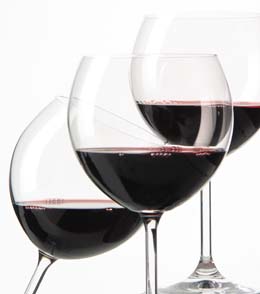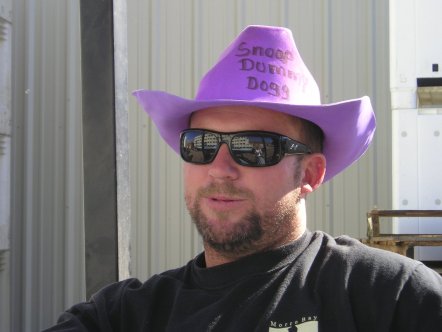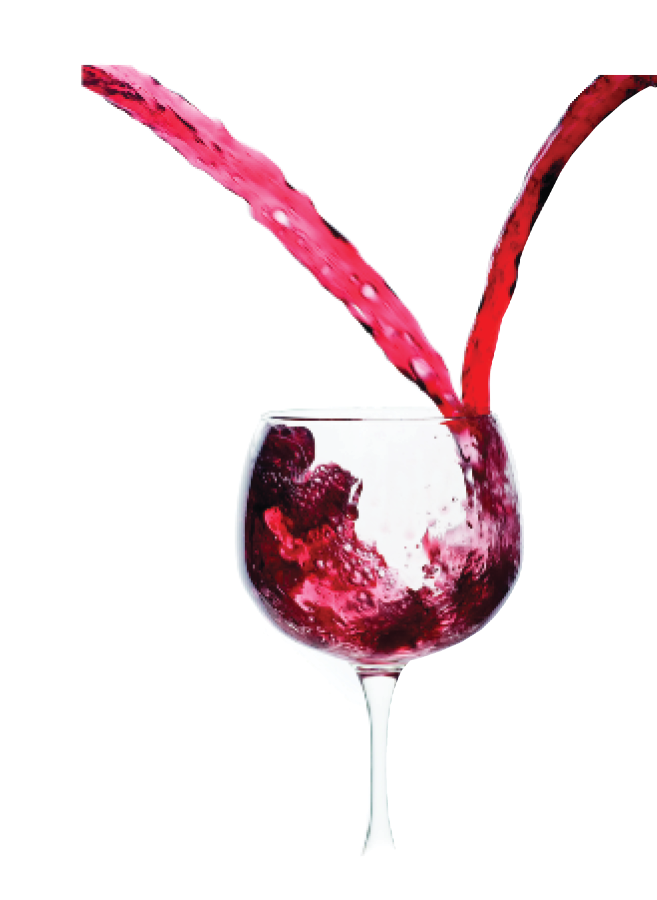
Have you been browsing through the shelves of California wines lately and found yourself staring curiously at a bottle whose label proclaims it to be a “Meritage?” Are you even further confused when you see two bottles right next to each other — one a deep garnet red wine and the other a pale straw white wine — and they both claim to be Meritage? Perhaps in these pages we can clear up your confusion and point you the way — both as wine lover and winemaker — to see a little Meritage in your own future.
It’s not French
First, let’s tackle the name. It isn’t French and it isn’t pronounced “Mare-a-TAZH.” Rather, it rhymes with “heritage.” It is a wholly made-up name, and it is the registered trademark of The Meritage Association, which can be found on the web at www.meritagewine.org.
The Meritage Association
The Meritage Association is a non-profit group of commercial winemakers from thirteen of the United States, devoted to producing blended wines in the manner of Bordeaux. (The thirteen states with member wineries are California, Colorado, Michigan, North Carolina, New Jersey, New Mexico, New York, Oregon, Pennslyvania, Texas, Virginia, Washington and West Virginia. Wineries from two Canadian provinces — Ontario and British Columbia — also have permission to use the term Meritage.)
The word “Meritage” is a composite of “merit,” suggesting the best wines these wineries produce, and “heritage,” reflecting the blending tradition of Bordeaux. Commercial winemakers may not use the term on their labels unless they become members of The Meritage Association, win license approval by adhering to Association guidelines and pay a $1 per case fee. Home winemakers, on the other hand, can feel a bit freer using the term on their labels, but whether or not you ever call one of your own wines a “Meritage,” it is good to know what the term represents, and aiming to make fine Meritage-type wines is a goal well worth pursuing.
Blends vs. Varietals
History, tradition and law dictate that, until quite recently, French wines — excepting those of Alsace — are not named for the grape variety used in their making. Instead, they are named for the place where they are made (e.g., Graves, Chateau Palmer or, simply, Bordeaux or Burgundy). When you see a French wine with a grape name on its label, you can be sure it has been packaged that way to sell in the grocery stores and wine shops of North America. The same holds generally true for the wines of Spain, Portugal and (with more exceptions) Italy. In the New World, on the other hand, fine wines are typically named after the variety of grape that makes the wine (e.g., Cabernet Sauvignon, Merlot or Sémillon). Most Western European wines are blends of two or more (sometimes many more) grape varieties. New World wines, as a rule, contain at least 75% of a single grape and other grapes that may appear in a blend are typically not mentioned on the label. Central European countries, such as Germany, Austria, Hungary and the Czech Republic also tend to use varietal labeling.
Sell! Sell! Sell!
There are benefits and drawbacks to each system, but for some North American winemakers or wine buyers, blending may seem a bit mysterious. A commercial winemaker trying to sell in our markets naturally wants to label his or her wines with names that are meaningful to customers, so if customers are looking for Merlot, the label needs to say Merlot.
On the other hand, winemakers — professional or amateur — want to make the best possible wines they can make from the raw ingredients they have available to them. So, if a winemaker believes that blending his Merlot with some other varieties can make better wine, but fears that nobody will buy it, he’s got a dilemma. One answer is to invent a new name, promote it heavily, and hope that it will become at least as marketable as Merlot or Cabernet Sauvignon; and that is how we got “Meritage.”
Why not “Bordeaux?”
You might wonder, of course, why winemakers who want to produce wines like those of France don’t simply call their products Bordeaux, Claret, Burgundy or some other French term. The reason is that, with a few grandfathered exceptions, French law and international trade agreements protect these place names, or appellations. They are, in fact, trademarks (which is also why North American firms can generally not produce and sell “Dijon“ mustard and “Roquefort” cheese). It is also why wine kit manufacturers now sell Chamblaise kits instead of Chablis, which is the protected name of a type of white wine made from the Chardonnay grape in a tiny part of northern Burgundy.
The Blended Wines of Bordeaux
It is true that blends, skillfully done with complementary grape varieties, often far surpass pure varietals in quality, which is why the great winemaking countries of Western Europe typically produce blended wines.
The one wine-producing district in the world that has been the subject of more imitation than any other is certainly Bordeaux, which lies along the Gironde Estuary in southwestern France. There are three principal styles of wine made in Bordeaux. The dry red wine is sometimes called Claret, or simply red Bordeaux. There is a dry white wine style, mostly from the Graves region, and a sweet white wine style, the latter principally from the villages around Sauternes and Barsac. The best of these wines are generally accepted to be among the very finest (and most expensive) wines in the world. No wonder grape growers and winemakers in California, British Columbia, New Zealand or South Africa want to emulate them. So let’s look at what goes into them. (See Tim Vandergrift’s article in the August-September 2004 issue for more information on red Bordeaux blends and the wines they have inspired world-wide.)
Red Bordeaux table wines are usually made from a large percentage of Cabernet Sauvignon. This is the principal red grape of Bordeaux, especially the regions of Pauillac, Margaux, The Médoc, St. Julian and St. Estèphe. Merlot and Cabernet Franc are more prominent in the regions of St. Emilion and Pomerol.
Red Bordeaux wines are usually blends of these three great red grapes — Cabernet Sauvignon, Merlot and Cabernet Franc — in varying proportions. They sometimes also contain small amounts of Malbec, Petit Verdot, or Carmenere. Red Bordeaux wines typically complete malolactic fermentation and spend some time aging in new or old oak.
Dry, white Bordeaux is best represented by the wines of Graves, which are made from Sauvignon Blanc and Sémillon grapes, sometimes with a small addition of the floral Muscadelle grape. (Muscadelle is known in California as Sauvignon Vert). There are other dry and off-dry wines made in Bordeaux from lesser grapes, such as Ugni Blanc (Trebbiano) and Colombard, but these are not the concern of folks trying to make the likes of the great wines of this region. White Graves do not undergo malolactic fermentation and are rarely fermented or aged in oak. Freshness and crispness are the qualities that best describe these wonderfully refreshing and aromatic wines.
The rich, sweet wines of Sauternes are also made from Sauvignon and Sémillon, and here a touch of Muscadelle is especially welcome. These differ from the dry Graves by being late-harvest, botrytized wines. They are long-lived, and full of complex character: and the epitome of dessert wines.
What Makes it Meritage?
To go back to where we began, what, exactly, is a Meritage? In principal, it is a blended wine made in the spirit of — and using the primary grapes of — Bordeaux. Specifically, the Meritage Association defines a Meritage wine as follows:
“A red Meritage is made from a blend of two or more of the following varieties: Cabernet Sauvignon, Merlot, Cabernet Franc, Malbec, Petit Verdot, St. Macaire, Gros Verdot, and Carmenere. No single variety may make up more than 90 percent of the blend.
“A white Meritage is made from a blend of two or more of the following varieties: Sauvignon Blanc, Sémillon, and Sauvignon Vert (Muscadelle). No single variety may make up more than 90 percent of the blend.”
The term “Meritage” was developed in the United States for use by American wineries. In Canada, however, Meritage is a term that is defined and protected under the VQA Act in Ontario. Canadian wineries are not members of the U.S. Association, but they have a letter of agreement that recognizes and supports the use of the term in Ontario. In Ontario, the list of allowable varieties in a red Meritage does not include St. Macaire, Gros Verdot or Carmenere.
Getting the Grapes
While it is unlikely most of us will come across St. Macaire or Gros Verdot, it won’t be hard to come up with the biggies: the Cabernet Sauvignon, Merlot and Cabernet Franc. (If you’re interested in a white Meritage, Sauvignon Blanc and Sémillon are easy to find as well. See Jeff Chorniak’s article on page 48 for specific blending strategies for white Meritage wines.) Malbec and Carmenere — as well as Muscadelle for white Meritage makers — may be a bit difficult to find, but they are available.
If you don’t have access to locally grown Bordeaux varieties, they can be purchased as kits, concentrates, and as pasteurized or frozen juice or must. The sources for these grapes are as diverse as California, New York, Ontario, France, Italy, South America, and Down Under.
Fabulous Flavors
Cabernet Sauvignon will typically provide the basic structure for the red wine, although Cabernet Franc can do this as well if grown in a favorable environment. In addition, the Cabernet Franc provides spicy flavors and a heady, violet-scented aroma. Merlot rounds and softens the blend while harmonizing the dark-fruit Cab flavors of cassis and black currant with bright red-cherry notes. Petit Verdot adds color, tannin, and depth. If you are going for a St. Emilion or Pomerol style (think Cheval-Blanc or Pétrus), then you may want to use Merlot or Cabernet Franc as the lead grape.
Blending Goals: Know your Target Style
For red Meritage, the goal of your blend can be either an understated wine with full, vinous aroma and tons of finesse, or it can be a big, somewhat tannic bruiser with gobs of fruit and lots of complexity. It helps to become familiar with good examples of Bordeaux wines before trying to emulate them.
Personally, when I make red Meritage, I avoid the highly extracted, chewy California model and also the big plum-fruited soft type typical of some Aussie wines. Bordeaux, even when it’s “big,” tends to be delicate, complex and just slightly understated. The Holy Grail in making a red Meritage is to achieve a wine with great finesse. Do complete malolactic fermentation (unless you are using kits) and don’t over-oak. Good Bordeaux wines are not dominated by oak! Acid levels can be a touch higher than we are used to in California wines, and both color and body can be a bit lighter. Again, gaining some familiarity with Bordeaux wine will help you formulate your ideas for your Meritage.
A Meritage by Any Other Name
The term “Meritage” describes a wine’s general style and specifies the component grapes that may have contributed to the blend. Some commercial producers use “Meritage” on their label as a descriptive term, while choosing to use a proprietary name for the wine that they hope will gain its own recognition. For example, Rodney Strong Vineyards in Sonoma County calls their Meritage “Symmetry,” and Guenoc Winery of Middletown, California calls theirs “Langtry.”
Blending Strategies: The Basic Rules
Making Meritage is a matter of having component wines available from the appropriate Bordeaux grapes, and then creating a blend that brings them together in a whole that is greater than the sum of the parts. There are a few basic ground rules in wine blending:
Keep ‘em Separated
Ferment the grapes separately. Blend only after all the component wines are stable.
Give the Blend Time to Mend
After blending, allow at least a few weeks of additional bulk aging before bottling. A month or two, if can wait that long, may be better to ensure the blend has become stable. Blending two or three stable wines can produce an unstable blend. You may need to consider further aging, fining or filtering.
Don’t Use a Loser
Never blend a defective wine with better wine in order to “lose” it in the blend. Wines with excessive volatile acidity, microbial infections, geranium fault or similar conditions will most likely ruin any wines they are blended with.
Malolactic Fermentations
If you like, you can blend wines that have undergone malolactic fermentation with those that have not done so. Many winemakers actually blend MLF’d and non-MLF’d wines for greater flavor complexity. You should not have to add any more sulfite than you would usually do to prevent MLF in the first place. Malolactic bacteria are actually very sensitive to SO2 and require very little to be inhibited.
There Will Be a Test
While your wines are bulk aging, experiment with some different blends. Make careful measurements and keep good notes. By the time the component wines are clear and reasonably stable, you will have developed a good idea of their individual characteristics. Be sure to degas your samples before tasting. Carbonic acid (dissolved CO2) or a little spritz will highly effect your wine’s perceived flavor and aroma profile. It will also make the wine seem more acidic.
Two Goals: Balance and Complexity
Blend for balance. Blend over-acidic wines with low-acid wines to achieve a proper balance. Blend deeply colored wines with those that are too light in color. High alcohol wines can be blended with those that are deficient in strength.
Blend for complexity, especially when making a Meritage. By carefully tasting and smelling your component wines you will develop an idea of their strengths and weaknesses, in terms of aroma and flavor. Fill out a long, thin wine with one that provides a deep, full mid-palate flavor. Balance spiciness with richness.
Kit Tips
There are a few special things to consider if kit wines are among the constituents of your blend. Allow the wines to bulk age for the full time recommended on the kit plus a few more weeks. Add the finings and the final dose of meta, but don’t add any sorbate or extra “flavor packs” that might introduce sorbate or additional sugars. After blending and allowing a few weeks to be certain the new wine is reasonably stable, you may add sorbate and another small meta dose before bottling if you like, but these should not be necessary. Allow plenty of time for the blend to stabilize. Additional fining or filtering may be needed before bottling. Do not blend a kit wine with a wine made from grapes or frozen must unless the latter has been kept adequately sulfited to prevent MLF and the build up of malolactic bacteria. You do not want a kit wine to undergo MLF under any circumstances. MLF cannot occur in concentrates and sterilized juices because the bacteria have been eradicated during the concentration or sterilization procedures. It is also not recommended in concentrates because most are tartrate-stabilized during production and therefore contain a very high proportion of malic acid. MLF would convert the malic into lactic acid, leaving the wine with little acidity, and a pH above 3.8, resulting in a flabby wine susceptible to bacterial infections.
Professional blending ratios
Here are some commercial examples of Meritage with information on their blending ratios to give you an idea of some percentages the pros are using:
Woodward Canyon 2001 Walla Walla Valley Estate Red ($55)
59% Cabernet Sauvignon, 28% Merlot, 13% Cabernet Franc
Macari 2000 Bergen Road ($40)
45% Cabernet Sauvignon, 35% Merlot, 13% Cabernet Franc, Malbec 7%
Rudd 2000 Oakville Estate
Proprietary Red Wine ($100)
86% Cabernet Sauvignon, 9% Cabernet Franc, 5% Petit Verdot
Maleta Vineyards
2001 Meritage ($30)
40% Cabernet Sauvignon, 30% Merlot, 30% Cabernet Franc
Fess Parker’s 2001 American
Tradition Reserve Meritage ($25)
50% Cabernet Sauvignon, 5% Merlot, 45% Cabernet Franc
Joseph Phelps 2000 Insignia ($80)
77% Cabernet Sauvignon,
19% Merlot, 3% Petit Verdot, 1% Malbec
Flora Springs
2001 Trilogy Meritage ($60)
57% Cabernet Sauvignon, 29% Merlot, 11% Cabernet Franc, 3% Malbec
Chaddsford 2000 Merican ($38)
53% Cabernet Sauvignon, 25% Merlot, 16% Cabernet Franc, 6% Petit Verdot
Inniskillin Okanagan
2001 Dark Horse Meritage ($25)
60% Merlot, 20% Cabernet Sauvignon, 20% Cabernet Franc
Conclusion
Home winemakers have access to a world of good ingredients. We can buy grapes locally in many areas of North America, and we can order grapes or stabilized musts and juices from various quarters of the globe. We also have access, via local dealers or online shops, to quality wine kits. We are free to blend Cabernet Sauvignon from Lodi, California with Merlot from Italy, Cabernet Franc from Ontario and a kit blend of Carmenere and Malbec from Chile! I suspect that the French winemakers of Bordeaux would argue that we cannot make a Bordeaux-like wine simply because our grapes aren’t grown in Bordeaux. We are missing that essential terroir. Perhaps that is true. We can, however, develop expertise in blending those noble grape varieties to make our own wines of great merit true to the venerable heritage of Bordeaux. In short, we can produce our own Meritage wines. The challenge then is to respond to our friends’ puzzlement when we serve them our creations and they look at our homegrown wine labels and say, “What flavor of grape is that?”




